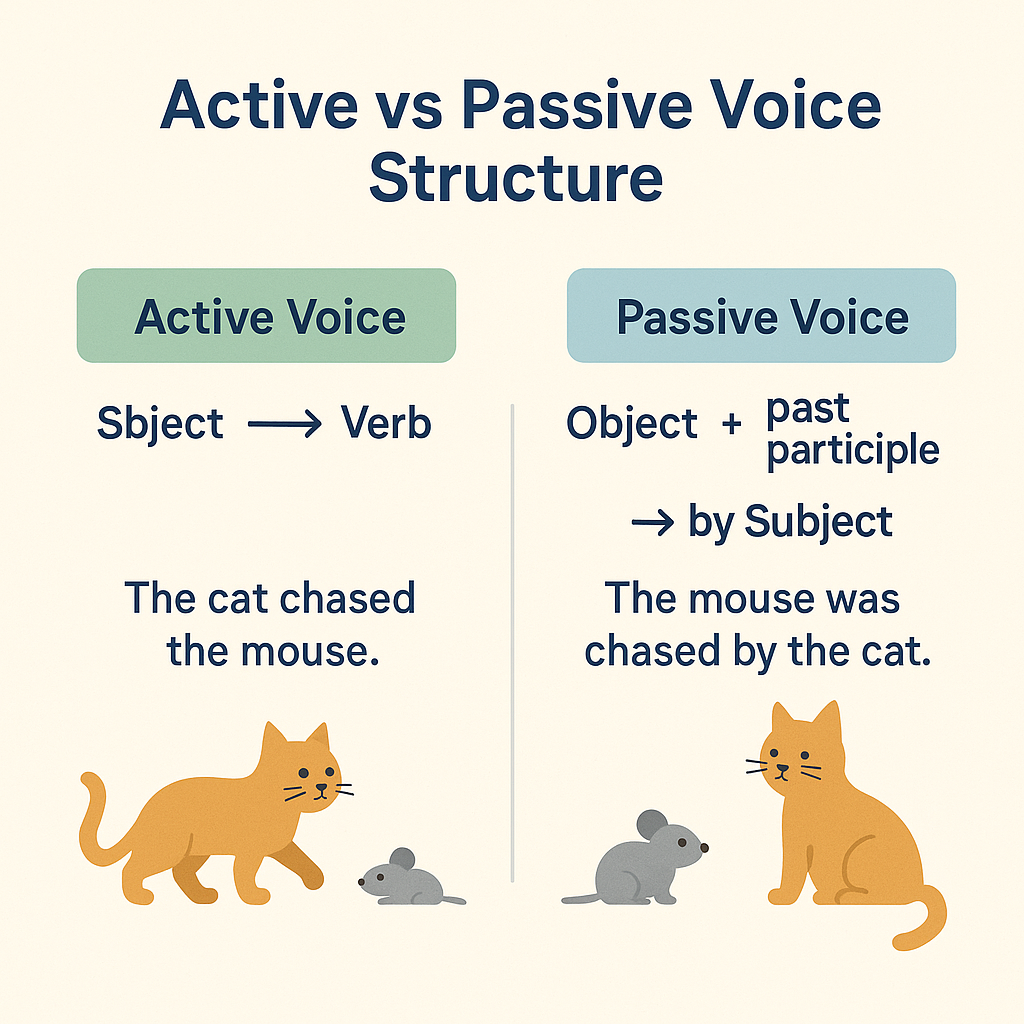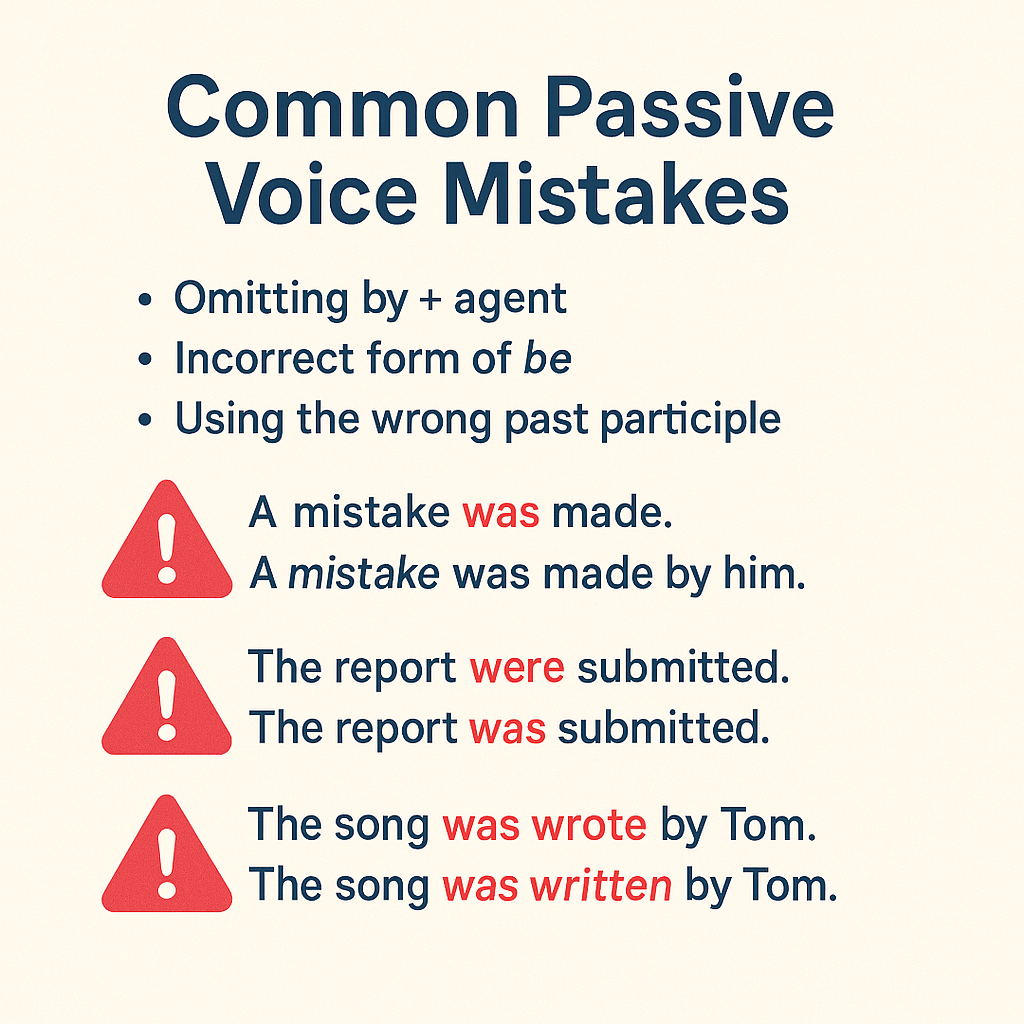Why This Actually Matters (Yes, Even to You)
If the phrase “active voice vs passive voice” makes your eyes glaze over, congratulations—you’re human. But listen, the way you structure a sentence isn’t just about impressing grammar snobs. It shapes how your readers understand you (or don’t). It’s the difference between sounding like a decisive leader or a wet napkin.

So let’s not pretend this doesn’t matter. This post will break down what these voices actually are, why they feel so different, when to use one over the other, and how not to sound like a confused robot in your writing.
Section 1: What’s the Real Difference Between Active and Passive Voice?
Active Voice: The Grown-Up Way to Speak
In the active voice, the subject takes action. Like an adult. Like someone with goals.
- Structure: Subject + Verb + Object
- Example: The researcher conducted the experiment.
Passive Voice: Formal, Polite, and Slightly Evasive
In the passive voice, the action happens to the subject. Often used to sound neutral—or to avoid blame.
- Structure: Object + Form of “to be” + Past Participle (+ by Whodunit, optionally)
- Example: The experiment was conducted by the researcher.
Quick Comparison:
- Active: The manager approved the request.
- Passive: The request was approved by the manager.
Functionally similar. Tonally, miles apart.
Section 2: How Your Tone Shifts with Voice Choice
Active Voice: Bold, Clear, No Nonsense
- Makes your writing punchy and direct.
- Highlights the agent (who’s doing the thing).
Example: The committee rejected the proposal. Brutal—but transparent.
Passive Voice: Measured, Diplomatic, or Just Vague
- Emphasizes the result, not the culprit.
- Sounds more formal, sometimes to a fault.
Example: The proposal was rejected. Mysterious. Who hurt you?
Tone Tip: If active voice is a strong handshake, passive voice is a carefully worded memo from Legal.
Still confused? Consult the sages at Cambridge Grammar Guide.
Section 3: When Should You Use Which?
Active Voice: Your Default Mode
Use it when you want to:
- Sound clear, confident, and efficient.
- Actually say who did what.
Examples:
- The doctor prescribed medication.
- We analyzed the data thoroughly.
Passive Voice: Strategic Use Only
Break it out when:
- You don’t know who did the thing.
- The doer doesn’t matter.
- You’re trying to sound like a published academic.
Examples:
- The medication was prescribed.
- The data were analyzed.
Pro Tip for Academic Writing: Passive is popular in research papers because it shifts focus from the writer to the work. For more strategies, check out our Academic Writing Grammar & Style Guide.
Section 4: Real Examples: Clear Writing vs. Corporate Mumble
| Example | Active Voice | Passive Voice |
|---|---|---|
| 1 | The student submitted the assignment. | The assignment was submitted by the student. |
| 2 | Scientists discovered a new element. | A new element was discovered by scientists. |
| 3 | We conducted interviews with all participants. | Interviews were conducted with all participants. |
| 4 | The company will launch a new product. | A new product will be launched by the company. |
Same idea. Different vibe.
Section 5: Common Mistakes: Don’t Sound Like a Grammar Bot

Mistake 1: Thinking Passive Voice Is Evil
No, it’s just… misunderstood. Like pineapple on pizza or your uncle’s band.
Mistake 2: Overusing Passive Voice to Sound “Professional”
Stop it. You sound like a vending machine. Formal writing doesn’t mean lifeless.
Mistake 3: Confusing Passive Voice with Past Tense
Not even close. Passive voice is about who’s doing the action, not when it happened.
Want clarity on the basics first? Here’s your lifeline: Simple Sentences in English.
Conclusion: Don’t Be That Writer
Active voice gets to the point. Passive voice adds polish. Knowing when to use each one is how you graduate from amateur hour to pro status.
Practice switching between the two. Experiment. Overthink it (just a little). Need more tips? Try How to Improve Academic Writing, Common Grammar Mistakes to Avoid, or use our handy Grammar Checker Tool to catch your messes.
Now stop procrastinating and write something.
❓ FAQ (Frequently Annoying Questions)
Q: What’s wrong with passive voice?
A: Nothing, unless you’re using it to hide from clarity. It’s fine—sometimes even necessary—but don’t use it as a crutch to sound “professional.” You just sound scared.
Q: Can I mix active and passive voice?
A: Absolutely. That’s what grown-up writers do. Use passive strategically, not because you’re afraid to commit to a subject doing a verb.
Q: Is active voice always better?
A: No. It’s just clearer most of the time. But sometimes you need to shift focus to the action itself, not the actor. Passive helps you do that—like a grammar ninja.
Q: How can I spot passive voice quickly?
A: Look for “to be” + past participle. Example: The mistake was made. No one wants to admit they made it—classic passive. Bonus: if it feels like Legal wrote it, it’s probably passive.
Q: Any tools to check my writing style?
A: Yes. Grammarly, Hemingway, and the free Paraphraser tool can highlight passive voice like a flashing neon sign.
